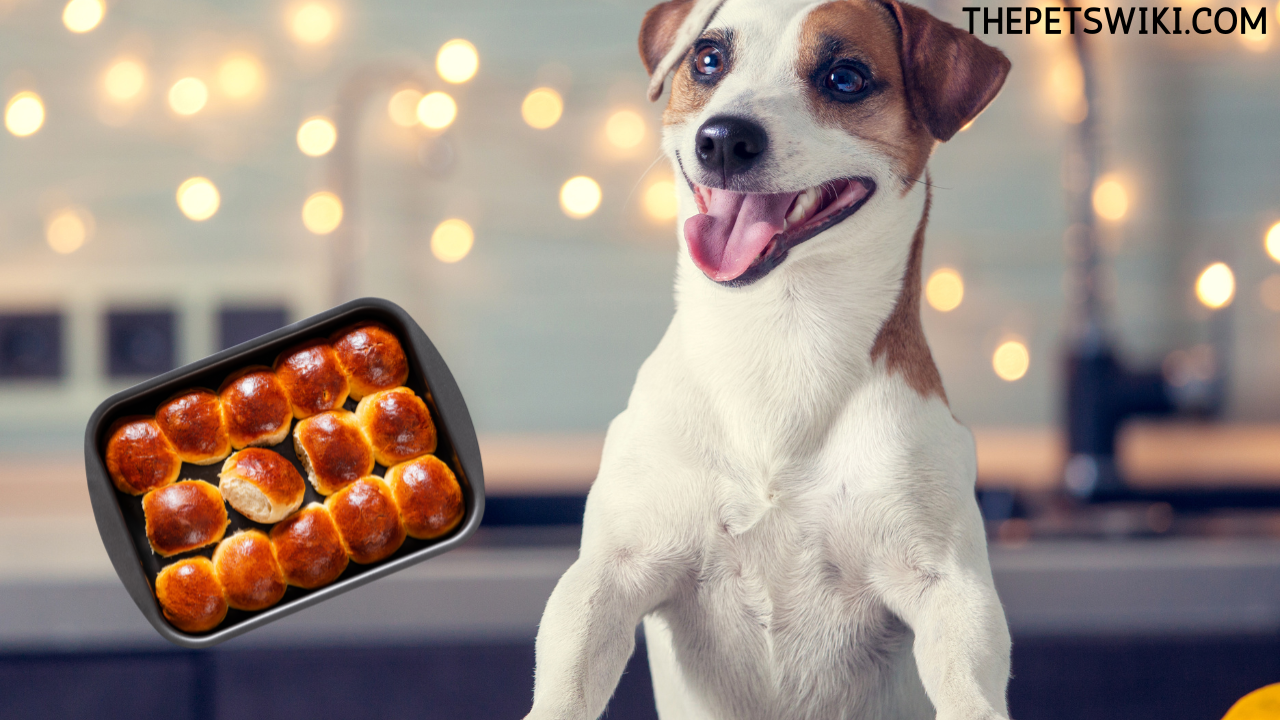As a responsible dog owner, you may have questioned whether Hawaiian sweet rolls are a suitable treat for your beloved pet. These soft and fluffy rolls are a popular choice for humans, but sharing them with your furry friend requires thoughtful consideration.
While a few bites may not pose an immediate threat to your dog, it’s essential to avoid Hawaiian sweet rolls as a regular treat or meal substitute.
Before deciding to incorporate Hawaiian bread into your dog’s diet, it’s crucial to be aware of the associated risks of feeding them human food. Engage in a conversation with your veterinarian to address any concerns and ensure the well-being of your furry friend.
Can Dogs Eat Hawaiian Bread?
Yes, you can offer in very limited amounts on rare occasions but not include it in their regular meals. Dogs have distinct dietary needs compared to humans, and certain ingredients found in our food may not align well with their digestive systems. The Hawaiian sweet rolls typically contain ingredients like sugar, yeast, and occasionally raisins, which can raise concerns for your pup’s well-being.
Hawaiian Bread Ingredients
Hawaiian bread is known for its unique sweet and soft flavor, and its ingredients commonly include:
- Flour: Enriched wheat flour is a staple ingredient, providing the base for the bread.
- Sugar: Adds sweetness to the bread, contributing to its distinctive taste.
- Yeast: A leavening agent that helps the dough rise, giving the bread its light and fluffy texture.
- Milk: Often included to enhance the richness and moisture of the bread.
- Butter: Adds flavor and contributes to the softness of the bread.
- Eggs: Provides structure and richness to the dough.
- Salt: Enhances the overall flavor of the bread.
- Water: Used in the dough-making process to achieve the desired consistency.
It’s important to note that variations may exist among different brands or homemade recipes, but these are the common ingredients that contribute to the unique and delightful taste of Hawaiian bread.
Risks of Hawaiian Bread For Dogs
While Hawaiian bread may be a tempting treat, it’s essential to be aware of the potential risks for dogs associated with its ingredients:
- Sugar: Excessive sugar intake can lead to obesity, dental issues, and even diabetes in dogs. Hawaiian bread, being sweet, contains sugar, and regular consumption can contribute to these health concerns.
- Yeast: While small amounts of plain, cooked yeast in dog food are usually safe, the yeast used in bread dough can expand in a dog’s stomach, causing bloating or even more severe issues like gastric torsion.
- Raisins (if included): Some Hawaiian bread recipes may contain raisins. Raisins and grapes are known to be toxic to dogs and can lead to kidney failure. It’s crucial to avoid any bread with raisins when sharing with your canine companion.
- Milk and Butter: While small amounts might not be harmful, some dogs are lactose intolerant, and large quantities of milk or butter can lead to digestive upset, including diarrhea.
- Eggs: In moderate amounts, eggs are generally safe for dogs. However, some dogs may have allergies, so introducing eggs into their diet should be done cautiously.
- Salt: Excessive salt consumption can lead to sodium ion poisoning in dogs. Hawaiian bread, like many human foods, may contain salt, so it’s important to monitor your dog’s overall salt intake.
Best Alternatives of Hawaiian Bread For Dogs
When it comes to finding suitable alternatives to Hawaiian bread for dogs, it’s essential to consider options that are safe and nutritionally appropriate for canine consumption. Here are some dog-friendly alternatives to Hawaiian bread:
- Plain Whole Wheat Bread: Opt for plain whole wheat bread without added sugars, raisins, or artificial sweeteners. Ensure it is given in moderation to avoid excessive carbohydrate intake.
- Plain Rice Cakes: Low in calories and easily digestible, plain rice cakes can be a light and crunchy alternative for your dog. Always check for any added seasonings or flavors.
- Cilantro Lime Rice: Also check if can dogs eat cilantro lime rice.
- Sweet Potato Chews: Baked or dehydrated sweet potato slices make for a tasty and nutritious treat. They are rich in vitamins and fiber, promoting digestive health.
- Carrot Sticks: Crunchy and low in calories, fresh carrot sticks are an excellent alternative to bread. They also provide essential vitamins and minerals.
- Plain Air-Popped Popcorn: Popcorn without butter, salt, or additives can be a low-calorie and fiber-rich snack for dogs. Ensure there are no kernels that could pose a choking hazard.
- Unsalted Crackers: Choose plain, unsalted crackers as a simple and mild alternative to bread. Monitor portions to avoid excess salt intake.
- Cooked Chicken or Turkey: Lean, plain, and boneless cooked chicken or turkey can be an excellent source of protein for your dog. Avoid seasoning and remove any bones.
- Blueberries: These antioxidant-rich berries can serve as a healthy and tasty snack. They are low in calories and high in beneficial nutrients.
What kind of bread is good for dogs?
Here are some types of bread that can be considered safe for dogs in moderation:
- Plain Whole Wheat Bread: Opt for whole wheat bread without added sugars, artificial sweeteners, or raisins. Whole grains provide some nutritional value.
- Plain White Bread: Simple white bread without added ingredients like raisins, nuts, or seeds can be a mild and safe option for dogs.
- Unseasoned Breadsticks: Plain breadsticks without added seasonings or toppings can offer a crunchy texture that some dogs enjoy.
- Homemade Bread: If you enjoy baking, consider making plain homemade bread for your dog. This allows you to control the ingredients and avoid harmful additives.
Is it okay for dogs to eat bread?
Simply, yes but it depends on the type of bread and what ingredients it consists of.
Is toast OK for dogs?
Plain toast in moderation can be okay for dogs. Plain toast without butter, spreads, or toppings is the preferable option. The toast should be well-toasted to avoid any potential digestion issues.
Final Thought
Before introducing any new food into your dog’s diet, it’s crucial to consult with your veterinarian to ensure it aligns with your dog’s specific dietary needs and any potential health considerations. Always monitor for any adverse reactions and offer alternatives in moderation.


